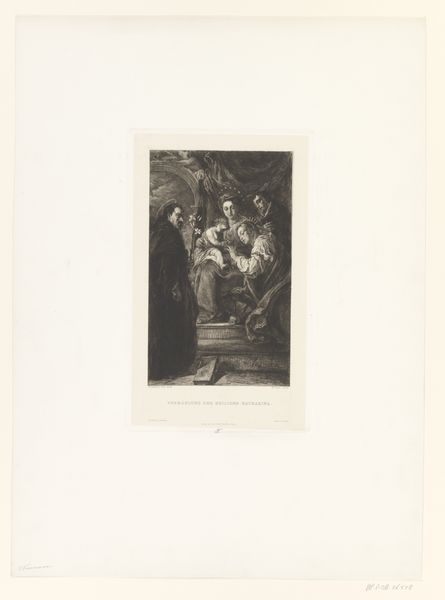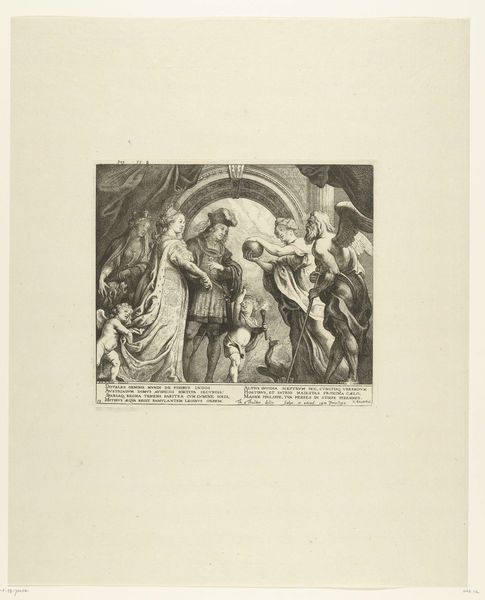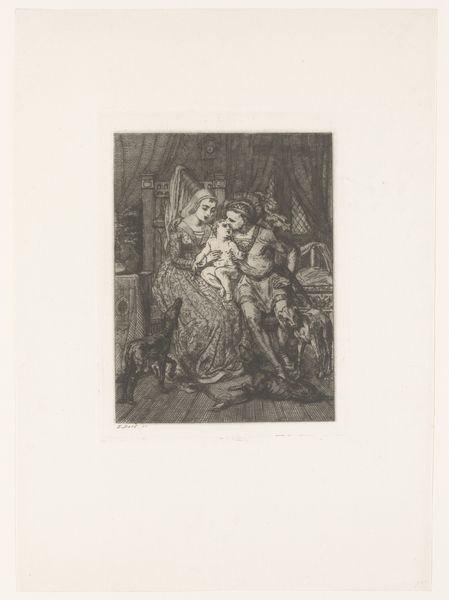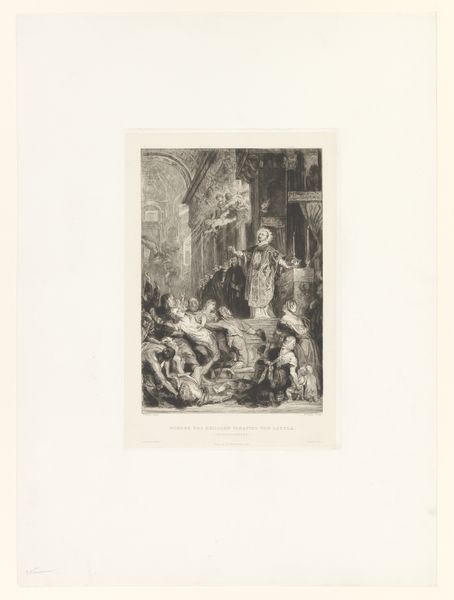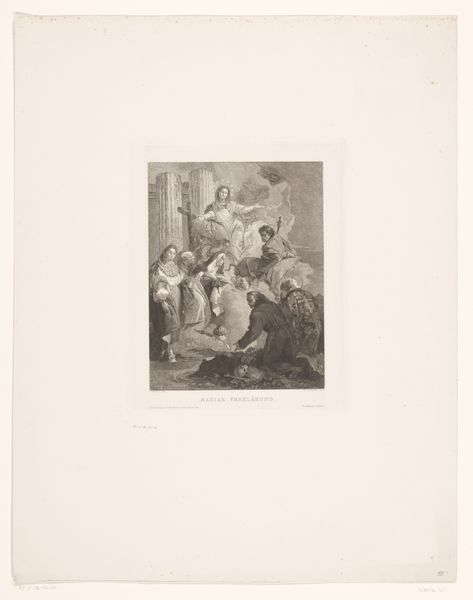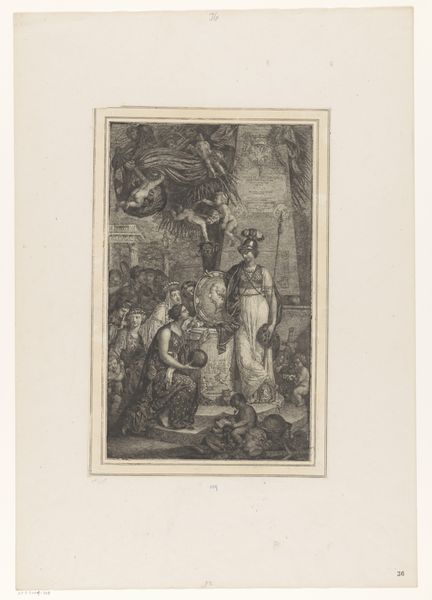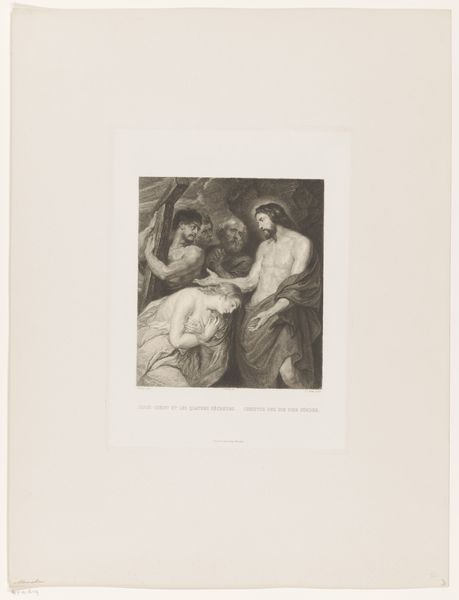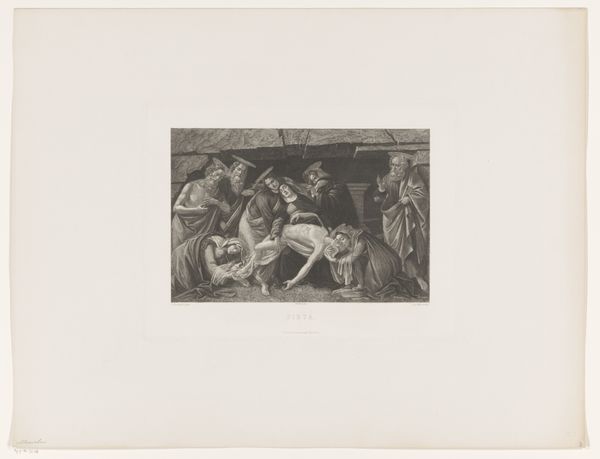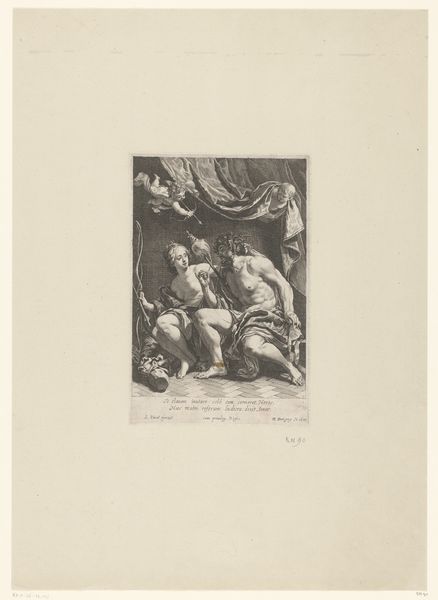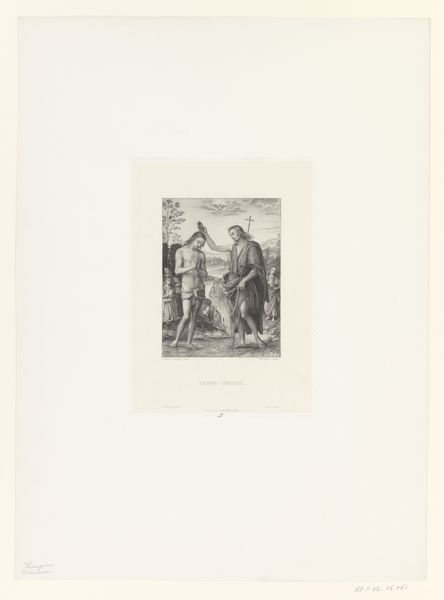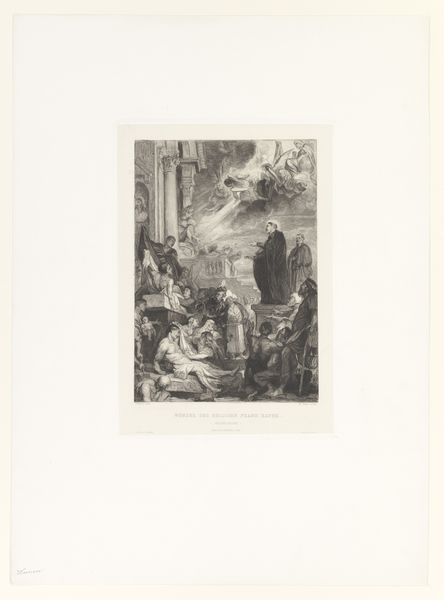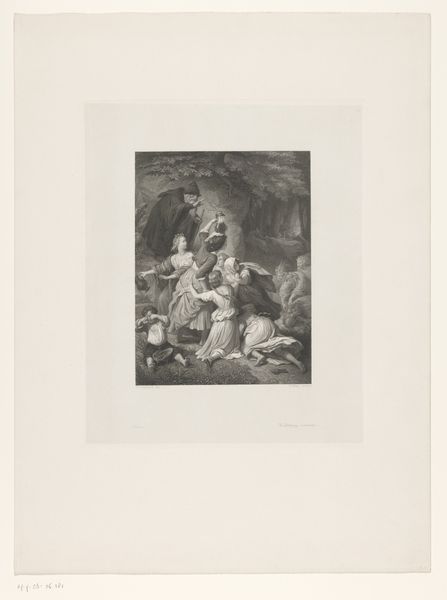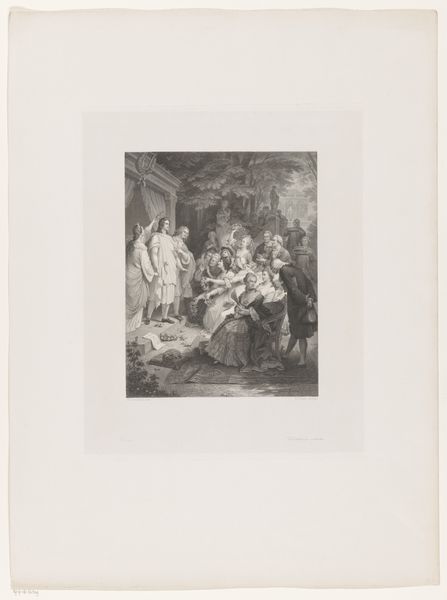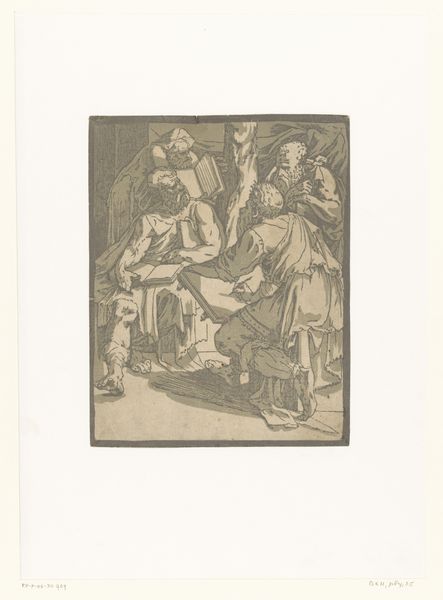
Dimensions: height 405 mm, width 291 mm
Copyright: Rijks Museum: Open Domain
Curator: What an unnerving atmosphere. The light seems to conspire with the dark, like a storm cloud ready to burst. Editor: Indeed. We're looking at "Doornenkroning," an intaglio print—specifically, an engraving—rendered on toned paper by Johann Leonhard Raab sometime between 1835 and 1899. It vividly captures the moment of Christ's crowning with thorns. Curator: Crowning with thorns... They really went for the dramatic, didn't they? All those sharp angles, the exaggerated musculature of the tormentors, it practically screams "Baroque!" which you notice from across the room... How much of what we see here, even the brutality, would you say is performative rather than literal, almost stagecraft? Editor: The theatricality is undeniable. Raab employs the established conventions of Baroque history painting to amplify the scene’s emotional intensity. Consider the strong chiaroscuro, the dramatic play of light and shadow. It heightens the sense of suffering and injustice while directing our gaze precisely to Christ's passive figure amidst the aggression. Curator: It feels like the composition itself is mocking Him, pushing the crown of thorns right to the forefront. It's nasty work by these artists. And all that painstaking engraving, turning pain into pretty little lines on paper. Editor: That’s an astute observation. The medium, engraving, allows for incredibly fine detail and tonal gradation. Raab masterfully uses line weight to create depth and texture. This attention to detail lends a visceral quality to the suffering depicted, rendering it almost tangible for the viewer. The thorns themselves appear shockingly real. Curator: So it's beautiful brutality! Baroque is strange: so much dark delight... So, who was Johann Raab, anyway? Did he revel in the gloom like this? Editor: Raab was known for his skill as an engraver, often reproducing the works of other artists. It speaks to his artistry that he captures the emotions and tension as dramatically as he does here, bringing out every muscle tremor and shadow with painstaking precision. He knew his audience. Curator: Still, this crown… it glitters darkly somehow, like it was precious... almost treasured? The whole print makes you consider the weird beauty and terror of belief. Thanks for sharing these historical details! Editor: My pleasure! Analyzing "Doornenkroning," we find the intertwining of artistry and narrative. It's a technical marvel, but also a powerful visual experience.
Comments
No comments
Be the first to comment and join the conversation on the ultimate creative platform.
